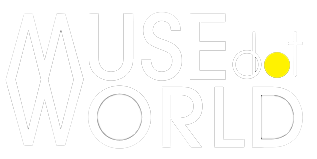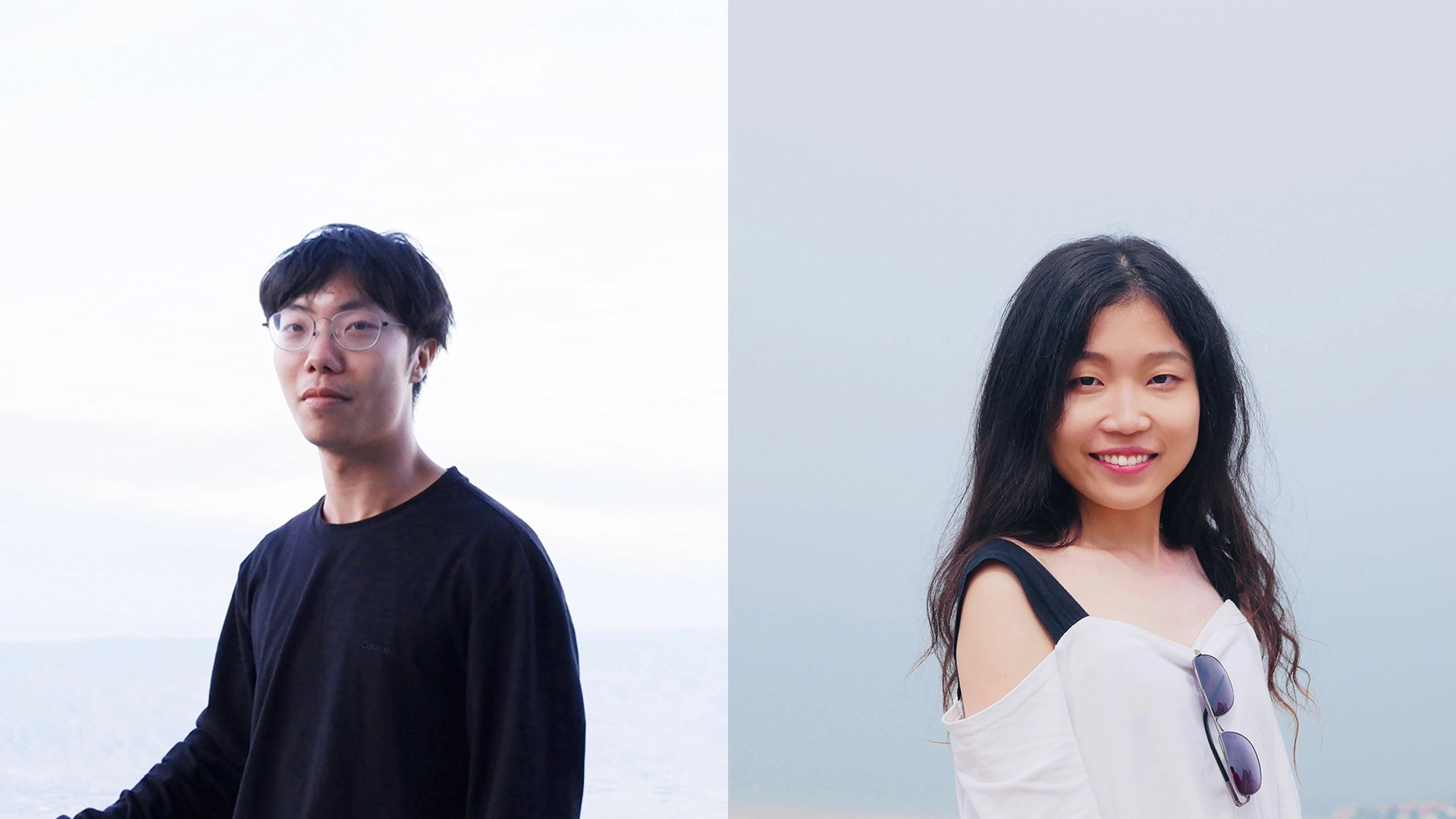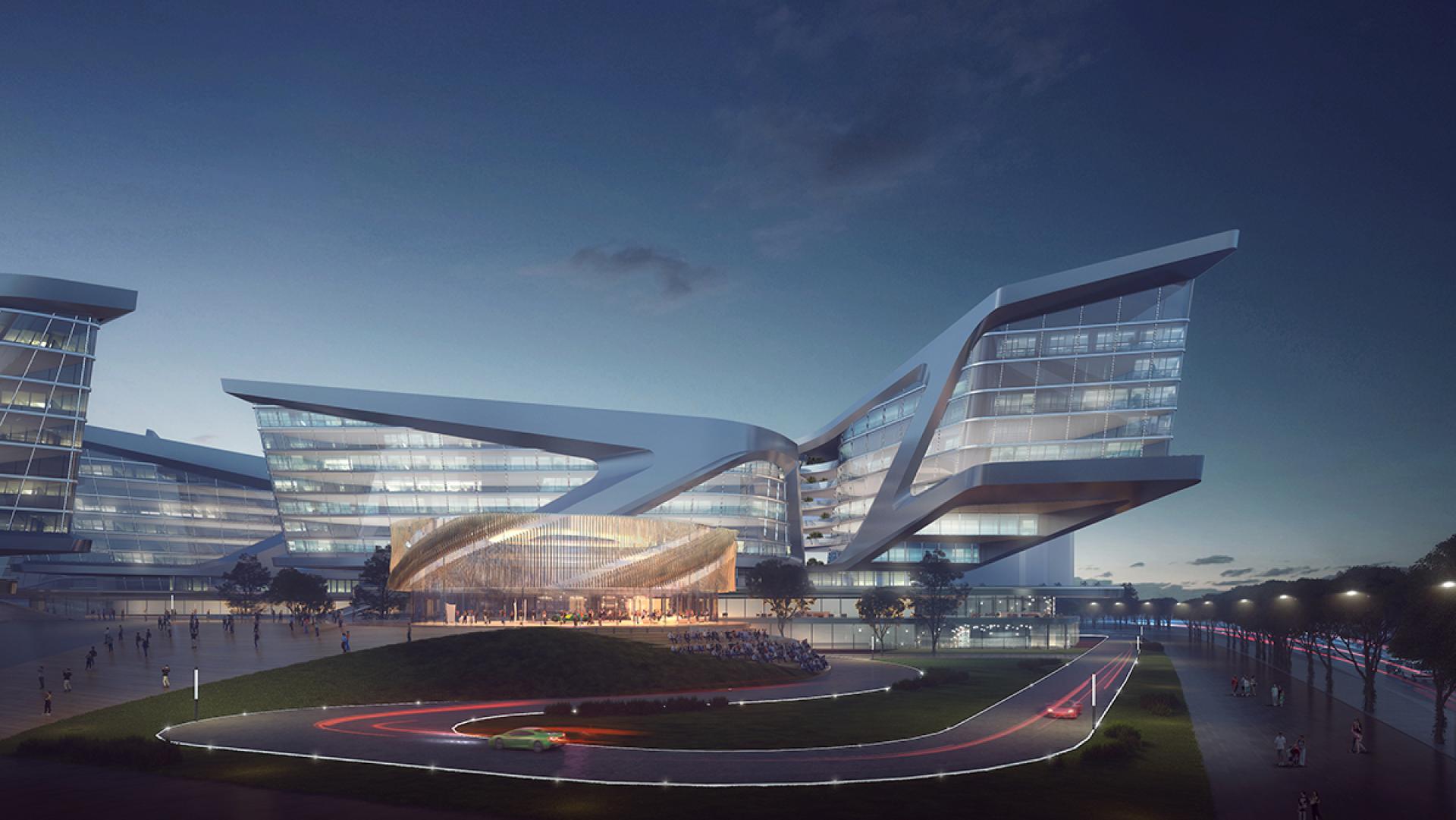Designing Narrative Infrastructure | Insights from Mingxun Zou & Daria Yang Du

Interview with Junling Zhuang | A Multi-Talented Design Technologist & Researcher
December 25, 2024
A Landscape Designer’s Vision: Transforming Neglected Spaces with Yijia Xu & Zhimin Ma
December 25, 2024Mingxun Zou & Daria Yang Du
Mingxun Zou and Daria Yang Du are accomplished architects with global experience. Mingxun focuses on social infrastructure and innovation through tools like BIM, while Daria brings expertise in spatial narrative design across diverse projects from her work with top firms like BIG and Gensler.
Mingxun: Hello, I’m Mingxun Zou, an award-winning architectural designer who studied and worked internationally across the United States, China and the United Kingdom. During my professional and academic experience, I spearheaded a lot of social infrastructure regeneration projects, and I'm always interested in exploring innovative tools such as BIM and Coding to constantly push the boundaries of design innovation.
Daria: I’m Daria Yang Du, a Los Angeles-based architect with a diverse portfolio of work experience at BIG, RIOS, Gensler, MAD, and Woods Bagot in both the U.S. and China. I have extensive experience working on interdisciplinary design projects, including hospitality, education, sports, culture, residential, landscape, and interior design. I apply my expertise in spatial narrative design, bringing a unique and more contextual approach to every project.
Mingxun: With my exposure to diverse cultures and a deep interest in art history and music, I gain a sense of accomplishment by internalizing various perspectives and expressing my values through design.
At the same time, it excites me when some of my urban visions become reality. The study of architecture and city life allows me to better understand the logic of societal operation and development. The methodology of architecture-related fields enables me to expand the boundaries of my knowledge in any direction based on my interests.
Daria: For me, the passion for all things with beauty drives me to the architecture field. I was also deeply inspired from a young age by a TV Reality show called Exchange Your House in 48 Hours. Watching the transformation of spaces after renovation, and seeing how the interior designer brought new life to each home, left a lasting impression on me.
What intrigued me even more was how two families would swap homes and become part of the entire rebuilding process. This also reminds me that the design process can deeply engage with human experience, making the journey even more meaningful.
Mingxun: I am an experienced architectural designer with a strong commitment to delivering high-quality work on every project. With a sharp vision for urban regeneration and social infrastructure, my expertise spans commercial, mixed-use, and cultural projects.
I aim to bring versatility and a multidimensional approach to design, considering ideas from various perspectives before selecting a direction. This allows me to explore design briefs more comprehensively, fostering creativity and innovation throughout the process.
Daria: I’ve had the opportunity to work across various design typologies, including science & education, commerce & retail, Culture & arts, sports & landscape, and interior & experience design. I specialize in contextual spatial narrative design, creating spaces that blend functionality with aesthetic value and tell a story through architecture. I’m passionate about collaborating with interdisciplinary teams to deliver innovative, sustainable designs that put the human experience at the center of every project.
Mingxun: Design enhances my critical thinking and helps me develop a systematic methodology, allowing me to broaden my horizons. It serves as a medium for me to express my ideas and contribute to building a world I aspire to see.
Daria: Design has the power to tell stories, shape emotions, and connect people to their surroundings. It’s not just about making something visually appealing, but about crafting spaces or objects that are thoughtful, purposeful, and harmonious with their context.
Mingxun: My artistic aesthetic is deeply influenced by high-tech architecture, also known as structural expressionism. I am particularly drawn to the elegance, authenticity, and simplicity of this style, which embodies a timeless quality, where the structure itself becomes a form of art.
Daria: I love designs that organize time, space, and events in a clear sequence. For me, guiding people through spaces that reveal new experiences at each step creates a dynamic and immersive journey, making the design more engaging and meaningful.
Mingxun: To me, a good design should respect history and culture while pushing boundaries through contemporary ideas. In other words, it’s about creating a dialogue between the past and the present, allowing historical and modern elements to coexist harmoniously. I value designs that can be bold, modest, or poetic, but above all, they must be thoughtful, and engaging with the existing context and infrastructure.
Daria: Good design should first captivate the eye and draw you in. Once you engage with the space, you should appreciate the designer’s thoughtful intentions, leading to unexpected and delightful spatial experiences. However, all design must be rooted in its contextual background, allowing everything to feel natural and reasonable in its occurrence.
Mingxun: My work is rooted in a deep consideration of the complexity and contradictions inherent in architecture. My design is characterized by the use of repeating elements, each given its own specific program and spatial quality, making them similar yet unique. I also enjoy exploring sophisticated details and innovative materials to create designs that are simple and straightforward, yet also elaborate and thoughtful.
Daria: My design style generally includes a detailed design development process and thorough contextual research. I have a strong ability to control details and specific areas within a space, which allows me to create striking expressions in interior design that captivate and impress those who experience them.
Mingxun: My design process typically moves from abstraction to tectonics. I gather inspiration from various fields and use abstract drawings, text, and physical models to visualize these ideas. From there, I find ways to translate them into architectural spaces while simultaneously considering the programmatic needs. Finally, I refine the space through detailed elements and tectonic features, bringing the design to life with both function and form.
Daria: My design process begins with thorough background research and analysis, which forms the foundation for my inspired concepts. I continuously develop these ideas in depth, allowing them to evolve over time. I often find unique inspiration in small-scale spaces, which can spark creativity and inform the overall design of larger spaces. This iterative approach ensures that each element is thoughtfully integrated, leading to a cohesive and innovative final result.
Mingxun: Yes, I was born in Chongqing, China, a city renowned for its mountain transportation systems such as cable cars, funiculars, mountain stairs, and terraces. Many of these infrastructures have been abandoned, but Chongqing is now in the process of revitalizing and integrating them into urban life. This initiative has sparked my interest in urban regeneration and social infrastructure, influencing the way I approach design by blending historical elements with modern urban needs.
Daria: Absolutely, I believe my country and its cultural heritage significantly impact my design process. I love traveling and immersing myself in different cultures. The more I explore a place, the better I understand the living conditions of its people and the various perspectives they bring to design challenges.
Cities in China are grand carriers of culture, blending ancient and modern influences, local and foreign elements, as well as urban and rural characteristics. This rich tapestry of diversity greatly informs my approach to design, allowing me to create spaces that resonate with the unique context of each location.
Mingxun: Winning this award has been a tremendous source of encouragement for us and serves as a significant milestone in my career. It symbolizes great honor and recognition, motivating us to continue pursuing excellence in our practice.
Daria: Winning a professional award has significantly impacted our career by validating our work and boosting our confidence. It has opened up new opportunities for collaboration and networking, allowing us to connect with other professionals in the industry.
Mingxun: It’s an industry that allows for full creative expression, it provides opportunities to learn and apply knowledge from various fields. Lastly, It fosters the development of aesthetic appreciation.
Daria: Artistry, emotion, and functionality.
Mingxun: I find a lot of my design inspiration from music, particularly classical compositions, as they help me think about rhythm and flow in architectural spaces.
Daria: I feel that my current design focus has shifted from being primarily aesthetic to emphasizing technical details.
Mingxun: The key to success is persistence, staying open to learning, and maintaining a passion for both the craft and the process. Embracing challenges, continuously refining skills, and not being afraid to take risks have been crucial to my journey. Success is not just about achieving goals, but about growing and evolving through each step of the journey.
Daria: My key to success is balancing creativity with practicality and embracing collaboration. Staying adaptable and open-minded in an ever-evolving design field is essential. My parting words of wisdom are to always stay curious and never stop learning; every project is an opportunity to refine your skills and connect meaningfully with people and their environments.
Winning Entry
Blowing Breeze, Blooming Engine | NY Architectural Design Awards
The conceptual design for the Lotus Technology Global Headquarters, located in Wuhan, Hubei Province, China, strategically balances urban planning, aesthetics, and... (read more here)
Mingxun Zou & Daria Yang Du
Mingxun Zou and Daria Yang Du are accomplished architects with global experience. Mingxun focuses on social infrastructure and innovation through tools like BIM, while Daria brings expertise in spatial narrative design across diverse projects from her work with top firms like BIG and Gensler.
Read about the interview with Yu-Hsing Liu | The Intersection of Eastern Culture & Western Styles here.


